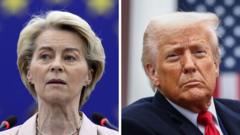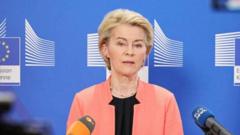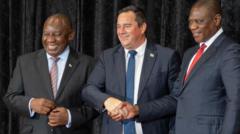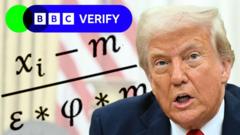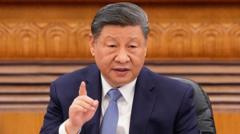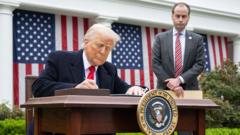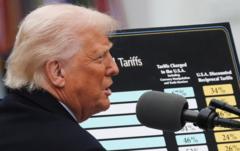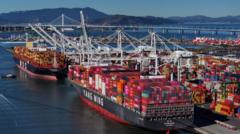In a surprising announcement, President Trump has implemented extensive global tariffs aimed at reshaping economic practices, characterizing it as a pivotal moment for U.S. independence in trade.
Trump's Bold Tariff Announcement: A Declaration of Economic Independence

Trump's Bold Tariff Announcement: A Declaration of Economic Independence
President launches sweeping tariffs, aiming to reshape U.S. trade relations and stimulate domestic manufacturing.
On April 2, 2025, President Trump made a significant move by unveiling a series of aggressive tariffs targeting U.S. trading partners, excluding Canada and Mexico, with a baseline increase of 10 percent. The European Union and China were notably singled out, facing significantly steeper tariffs, with rates set at 20 percent for the EU and an astounding 34 percent for China. Japan and India will also see substantial tariffs of 24 percent and 26 percent, respectively.
In an address from the White House Rose Garden, Trump described this tariff initiative as “our declaration of economic independence” and dubbed the day as “liberation day.” The rationale behind these tariffs stems from the view that various nations have exploited the U.S. through unfair trade practices. Trump stated that the tariffs were designed to recalibrate the global economic balance.
Global governments are bracing for retaliatory measures, heightening the risk of escalating trade conflicts. Renowned trade analyst Ana Swanson remarked on the remarkable nature of the figures disclosed, emphasizing that while these tariffs might lead to a revival in U.S. manufacturing, they are poised to raise costs for American consumers and businesses, alongside igniting potential trade wars.
The administration’s inner circle appears divided on the objectives of these tariffs—whether they are primarily intended for revenue enhancement or the reduction of trade barriers, adding to the complexity of U.S. trade policy moving forward.
In an address from the White House Rose Garden, Trump described this tariff initiative as “our declaration of economic independence” and dubbed the day as “liberation day.” The rationale behind these tariffs stems from the view that various nations have exploited the U.S. through unfair trade practices. Trump stated that the tariffs were designed to recalibrate the global economic balance.
Global governments are bracing for retaliatory measures, heightening the risk of escalating trade conflicts. Renowned trade analyst Ana Swanson remarked on the remarkable nature of the figures disclosed, emphasizing that while these tariffs might lead to a revival in U.S. manufacturing, they are poised to raise costs for American consumers and businesses, alongside igniting potential trade wars.
The administration’s inner circle appears divided on the objectives of these tariffs—whether they are primarily intended for revenue enhancement or the reduction of trade barriers, adding to the complexity of U.S. trade policy moving forward.

